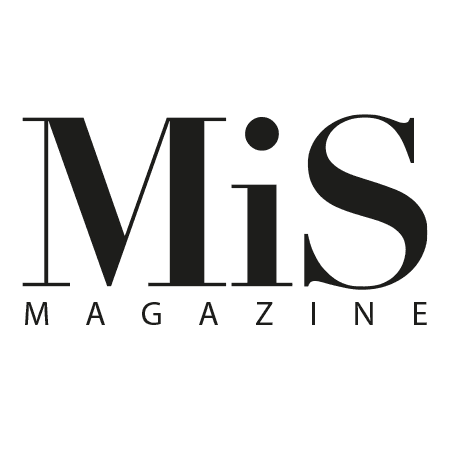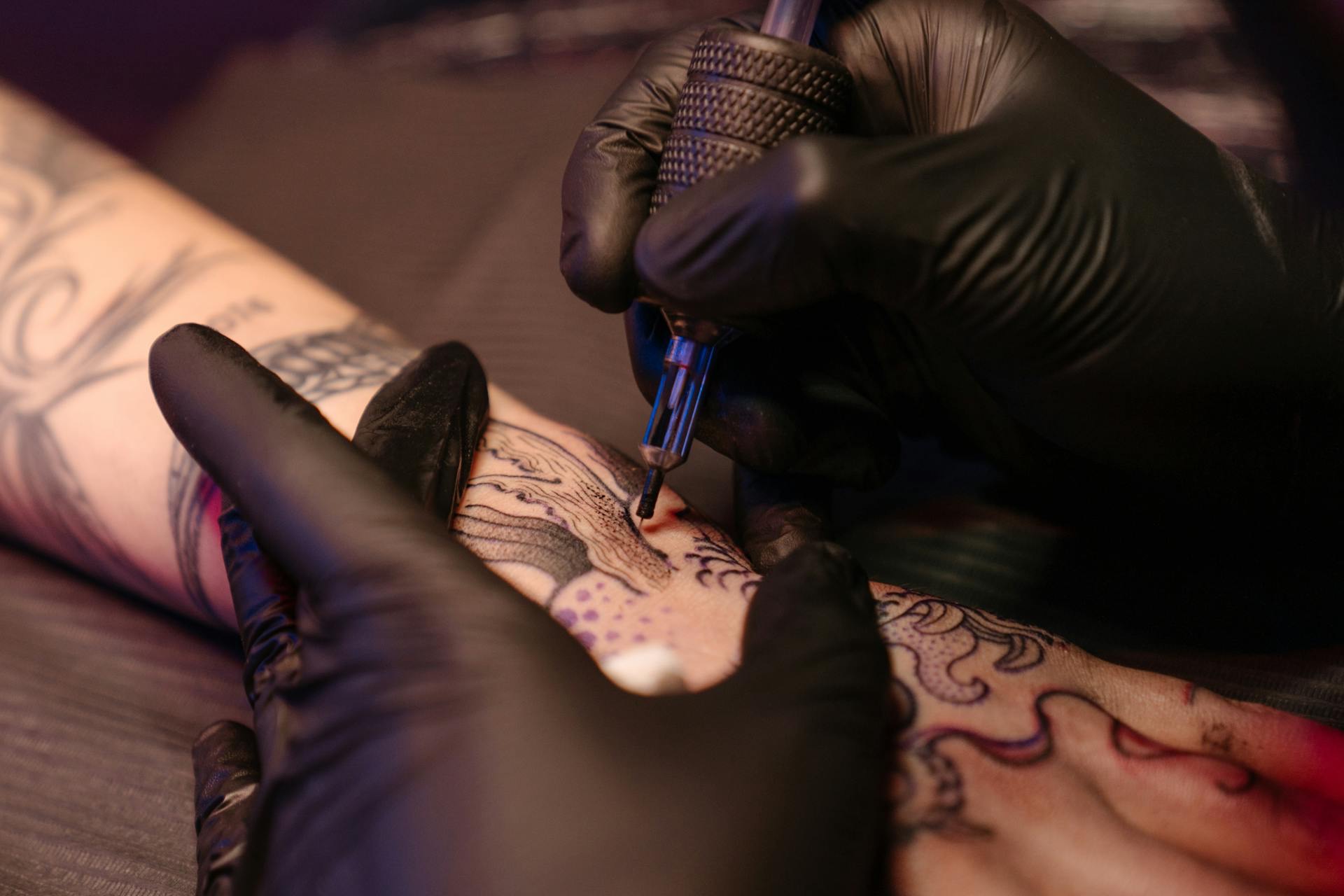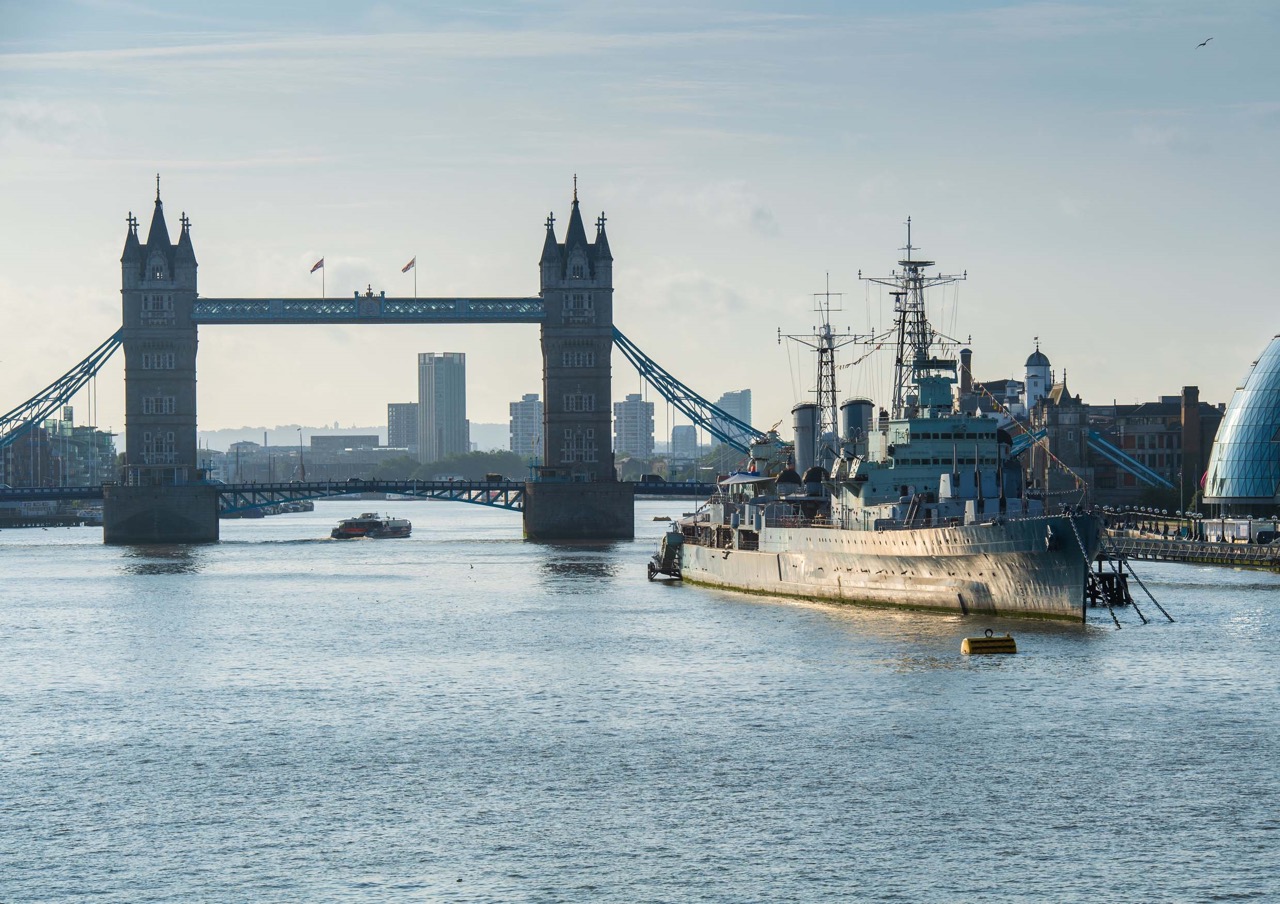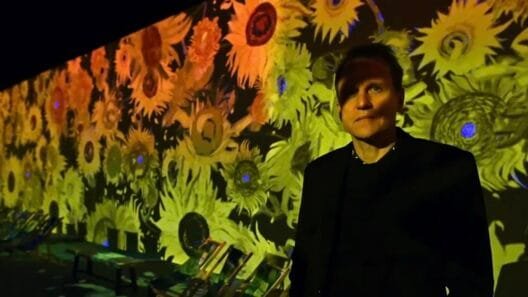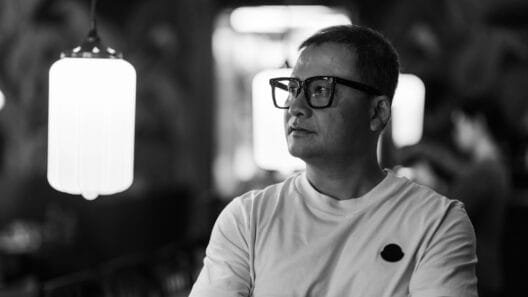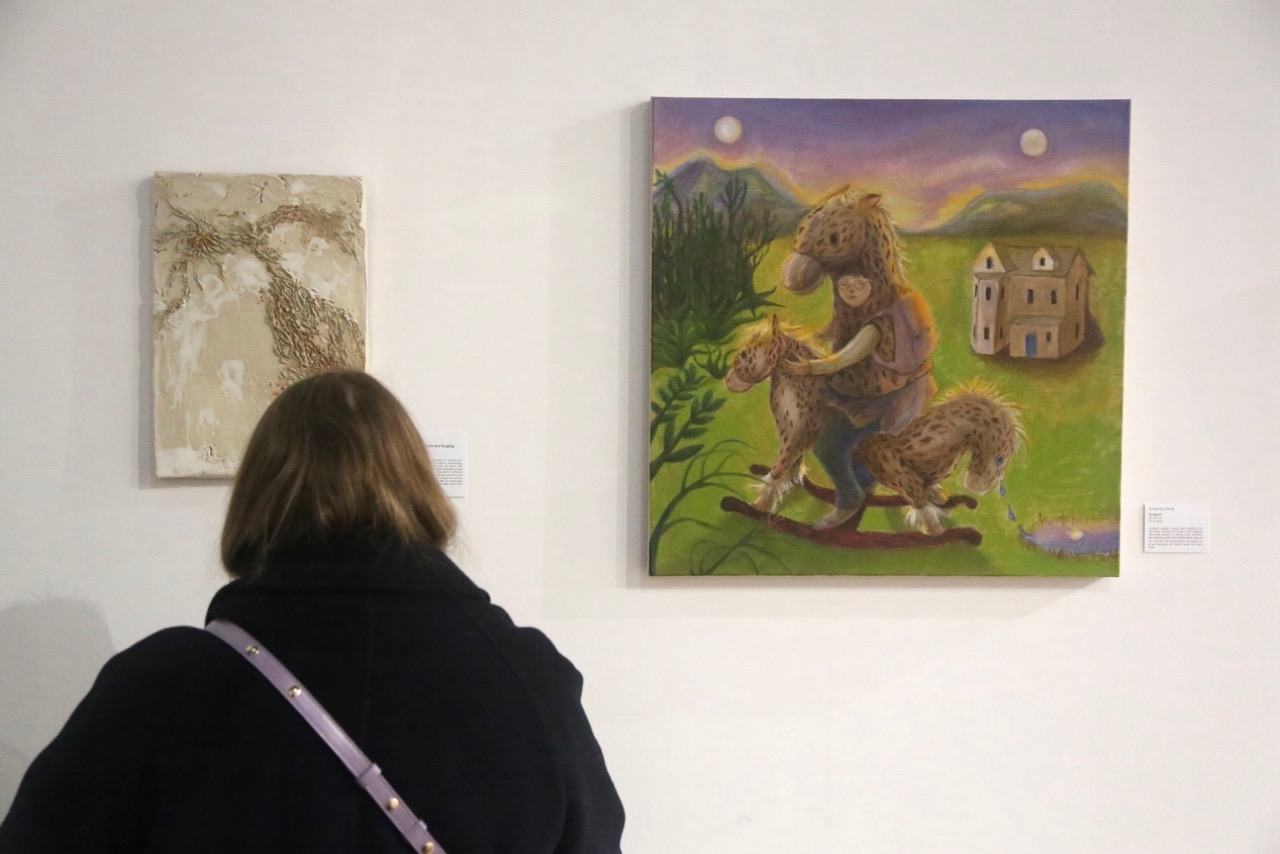In his reflection on toys and childhood, Walter Benjamin suggests that broken objects possess a generative allure. Unlike intact commodities, the damaged toy does not close the loop of function. It invites the child not to use, but to remake. Through this act of play, the child engages not with wholeness but with contingency. Meaning arises through reassembly. Completion is deferred.
The diverse work of artist Chaoming Zheng seems to follow the same logic. Her objects—rocking horses with asymmetric spines, carousel fragments, malformed equine figures—do not simulate toys so much as they stage the failure of toys to perform. In site-specific exhibitions from Simmos to the Royal George this year, and previously at the Truman Brewery, she engages the toy not just as childhood artifact but also a sculptural language of stalled relation..
In Arts Archive London’s recent grow show ‘The Drift of the Floating Dock’ that talks about Hackney Wick’s old Ford Lock and temporary spaces, her painting is precise in its ambivalence. A girl wearing a horse costume sits astride a double-headed rocking horse. On one side, a dollhouse; on the other, a forest. She leans forward, but the mount remains static. Movement is represented, not enacted. The work does not allegorize transition—it holds it in suspension. What it offers instead is a diagram of desire unfulfilled, motion conceived but never enacted.
This refusal is not decorative. It points toward what Lauren Berlant has called cruel optimism, which is a relation where the object of one’s longing is also what prevents its realization. The rocking horse is not merely an image of innocence or nostalgia. It functions here as a trap: a form that constrains the thrill of movement to a mere fantasy. The desire for forward motion remains intrinsically blocked.
This condition repeats, physically and affectively, in her works from Farce Gallery’s exhibition this April at a historic pub in Deptford. One work presented a cluster of floor-bound, sugar-like horses. Their surfaces sagged, semi-translucent, prone to dissolution. Another, suspended near the pub’s bar and front window, rotated gently. A carousel of disfigured hands—generated and glitched through early-stage AI. Fingers multiplied and fused unpredictably. On each palm, a message: hold my hands.
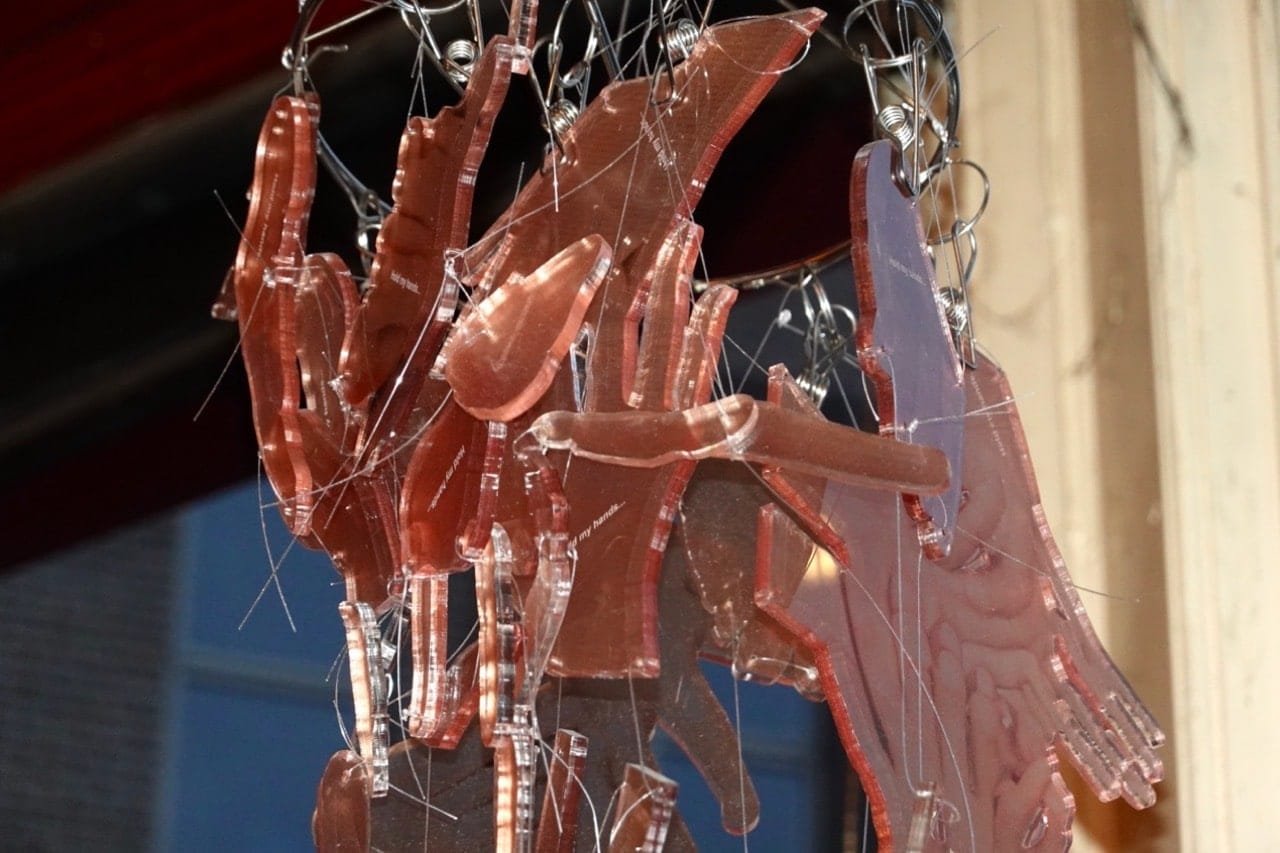
The invitation cannot be answered. These hands do not offer grasp but glitch. As Eva Illouz has written, the contemporary economy of intimacy is shaped not only by personal need but by the architecture of technological mediation. In Chaoming’s carousel, touch is pre-scripted yet impossible. The work does not mourn this failure. Instead, it materializes it, foregrounding connection as a loop of deferral, a gesture repeated long after its efficacy has collapsed.
Her site-specific installations started within urban landscape. In Banngo UK’s 2022 exhibition in a public park, there was a carousel-like structure referencing orthopedic conditions common among adolescent girls, rendering physical deformation as an unstable ride. The spinning skeletal creatures hanging from tree trunks drew viewers into a topology of failed equilibrium. It lingered near walking paths and playgrounds an errant object, resisting legibility, accessible only through incidental encounter. Movement became conditional: possible, but uncertain.

The same work resurfaced at Photobook Gallery in Shoreditch. Relocated indoors, its motion was not suspended but reframed. In a space defined by soft lighting and seated conversation, the work moved subtly, if at all, more ambient than animated. Alongside it, her copperplate and lithograph prints of equine figures in distortion: collapsed anatomies, metallic torsion, diagrammatic limbs. The exhibition also included a clay beast-making workshop from the artist as performative extension, diffusing sculptural labor across unfamiliar hands and provisional forms.
At Brick Lane’s Truman Brewery Gallery in 2023, the logic scaled up. Two double-headed rocking horses stood immobile at the center of the room. Visitors climb on, only to discover directional collapse. No forward. No reverse. To ride the horse is to inhabit the glitch, not to correct it. Interaction becomes impasse. The work does not simulate interactivity; it exposes its limits. Nearby, flickering video imagery looped disjointed gestures, echoing the sculptural logic of halted movement and deferred agency.
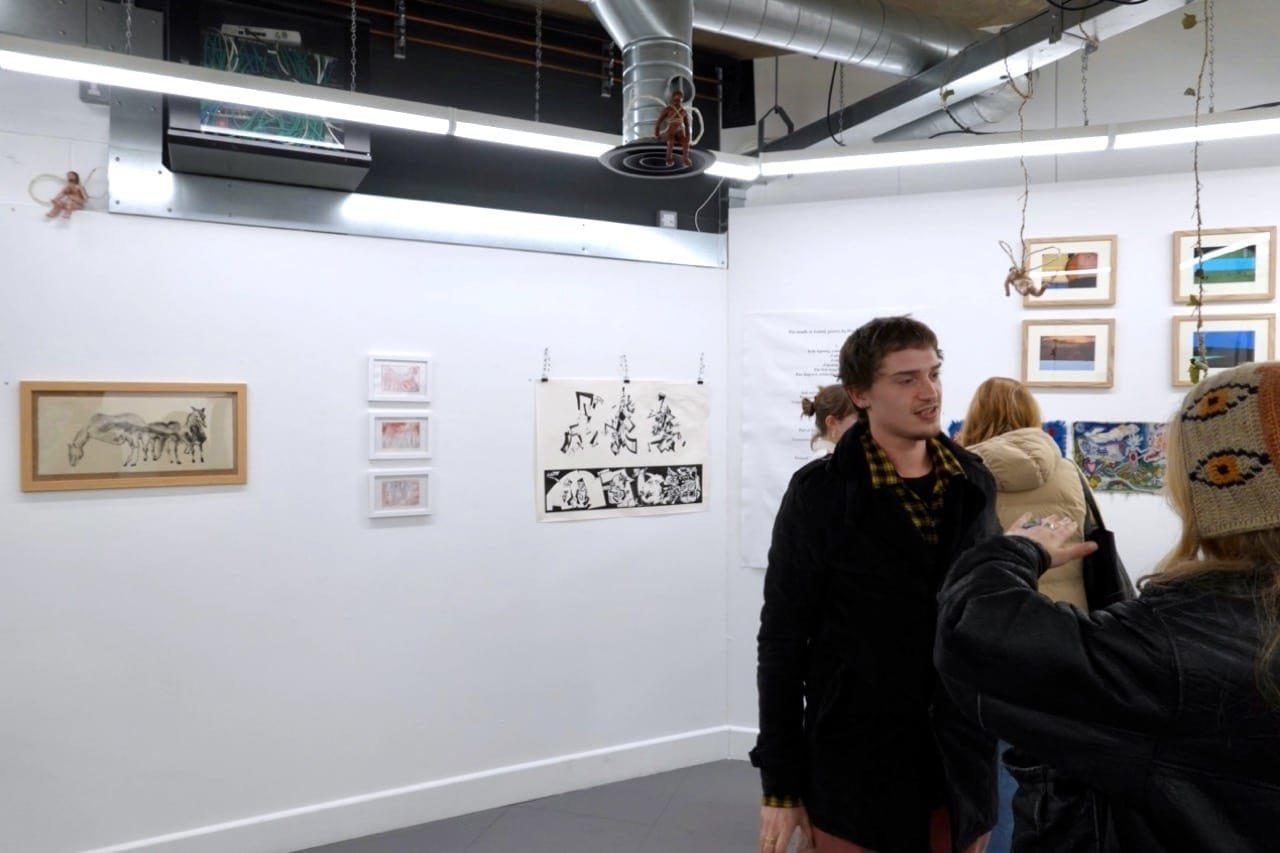
Across these iterations, Chaoming’s materials do not merely evoke the miniature or the childlike. According to Susan Stewart, the miniature condenses longing and control. But Chaoming’s objects fracture both. They refuse nostalgia as much as they refuse function. They are not small because they are precious. They are small because they withhold scale as a stable frame.
To dwell with these works is not to decipher them. It is to remain proximate to their contradiction. Their gestures toward contact—riding, grasping, spinning—remain formally suspended. They do not resolve. They circulate. In doing so, they propose not comfort, but an intimacy premised on friction. Community, here, is not the sum of those who gather. It is the relational field defined by partial recognition, misread gesture, delayed response.
If the glitch has become a trope of aesthetic disruption, Chaoming returns it to structure. Her sculptures do not depict failure. They are failure, precisely calibrated. They do not seek repair. They offer something more: a poetics of shared misalignment, a system in which the broken does not ask to be fixed, only to be felt.
